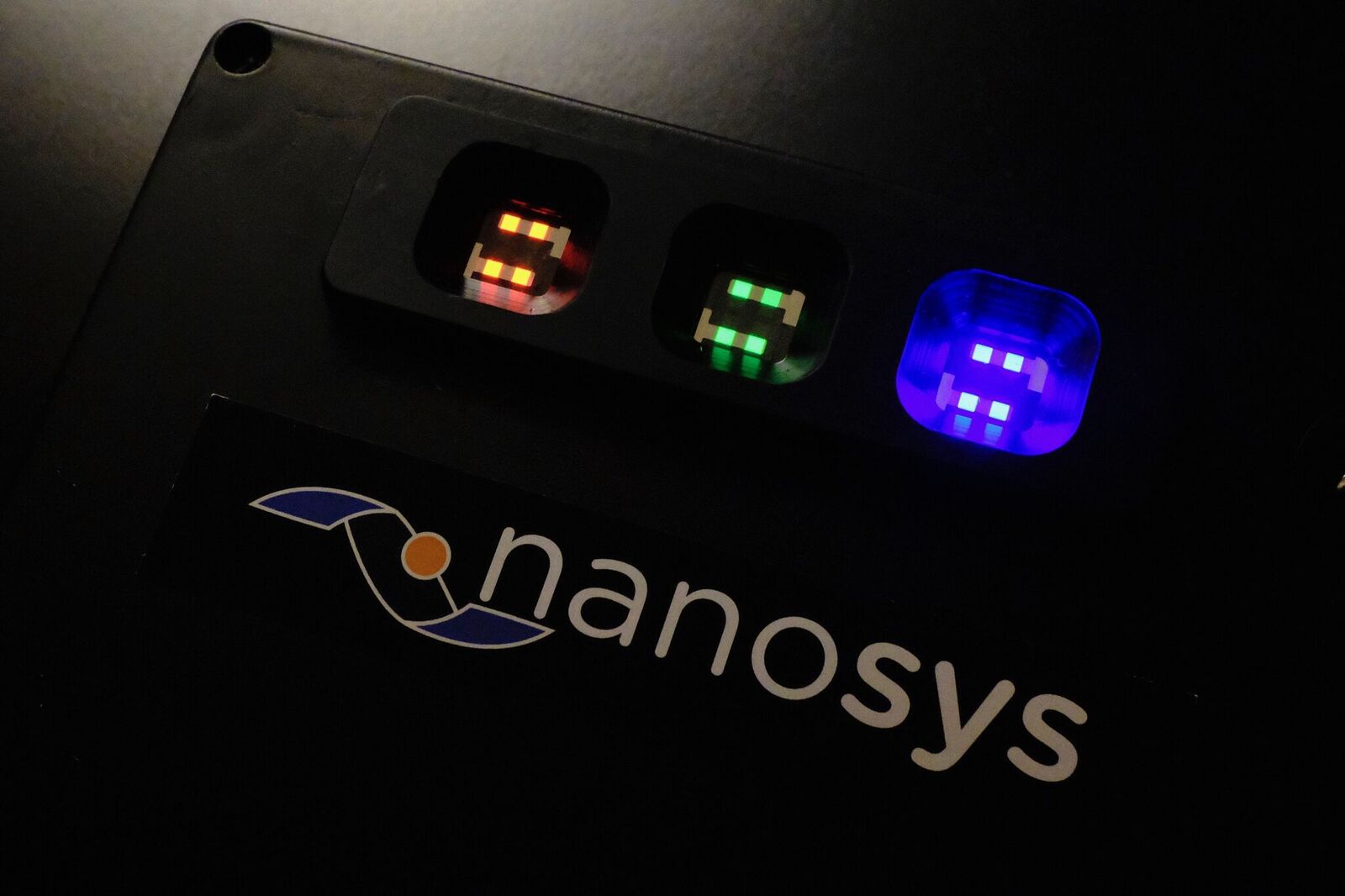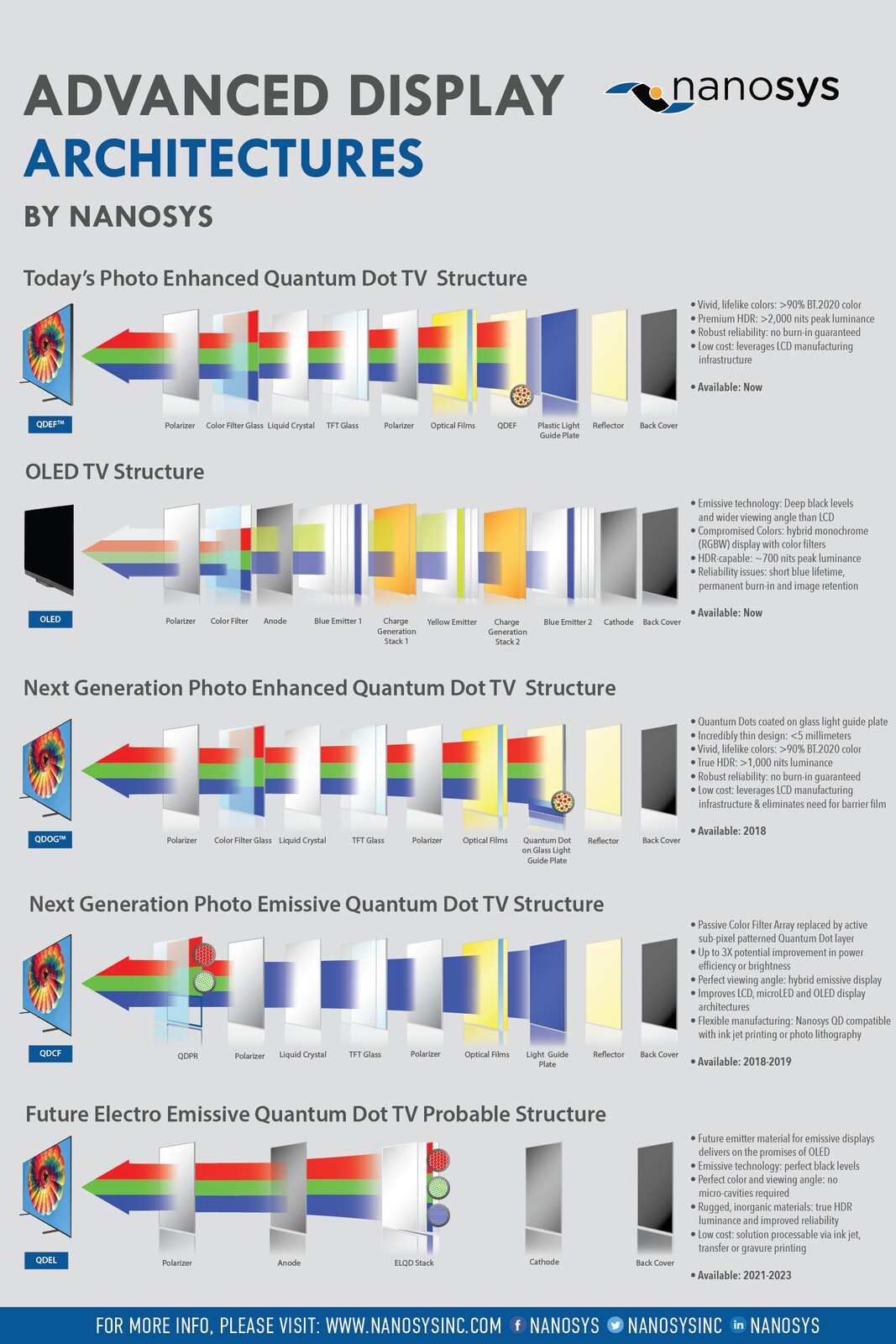Nanosys was ensconced in a suite in the LVH where it was talking to its customers, potential users and some analysts.
The company is seeing quantum dot technology continue to roll out in the market and the firm told us that it expects to see a wide colour gamut professional display, later this year, that will have full support of the DCI P3 gamut and also more than 5,000 cd/m² of output and designed for use in high end HDR applications.
At the show, there were a number of topics covered. After talking about the continued developments of films and the concept of QDOG (Will QDOG Have its Day?), we got onto some new applications for the firm’s QD technology. Nanosys strongly believes that the microLED industry is best enabled by the use of colour conversion. One of the challenges of LED is that the architecture for LEDs are different for different colours. That makes for a lot of manufacturing and systems integration challenges and makes monolithic devices practically impossible using traditional LED making techniques. Of course, several vendors, such as Glo (IC04 Glo is Looking for Partners in MicroLED) and Soitec (Soitec Makes LED Breakthrough) have new ways of making LEDs to solve this problem. However, Nanosys points out that it can put its QDs onto blue LEDs to create RGB structures with a single LED architecture.
Nanosys told us that it has demonstrated the use of its QDs in microLED conversion down to around 20µ although microLEDs may eventually get down to around 3µ.
QDs in the Filter
We have been reporting on the idea of quantum dots in the colour filter (QDCF) since SID in 2016. The concept is getting closer and we half expected to see a production sample at the show. However, as far as we know, nobody showed such a panel publicly. However, Nanosys had a small sample of the technology that showed how the viewing angle could be maintained, regardless of viewing angle. In the QDCF structure, the red and green quantum dots are emissive, but the blue is transmissive. That means that the company has had to work with ink makers to develop a blue scattering layer that can be applied alongside the quantum dots to match the viewing angle.
Nanosys has developed a scattering layer for blue with an ink maker. Image:Nanosys
Another Challenge Overcome
One of the challenges in developing QDCF is that the quantum dots destroy the polarisation of the light, so whereas in traditional LCD architectures, the output polariser (the analyser) is on the outside of the LCD cell, in the QDCF architecture, the polariser has to be before the QDs which means moving the polariser inside the cell. As we have said before, this is not a physics problem, but gives some practical challenges that need to be overcome before commercialisation. At the show, Nanosys told us that it has talked to panel makers who have done this up to G8.
 Nanosys had this demo of inkjet printed QDCF in its suite. Image:Nanosys
Nanosys had this demo of inkjet printed QDCF in its suite. Image:Nanosys
Finally, the end game for QDs is to develop them as electrically stimulated and at the show, in the suite, the first time that red, green and blue have been shown. The technology is probably years away from commercialisation, but there is the potential to replace the organic materials in OLEDs with inorganic materials that may have a longer life.
 Nanosys showed this electrically stimulated QD demonstration. Image:Nanosys
Nanosys showed this electrically stimulated QD demonstration. Image:Nanosys
Analyst Comment
Nanosys also showed the graphic below which shows the different QD architectures. It’s a big file, but a useful resource.
 Click for higher resolution
Click for higher resolution

